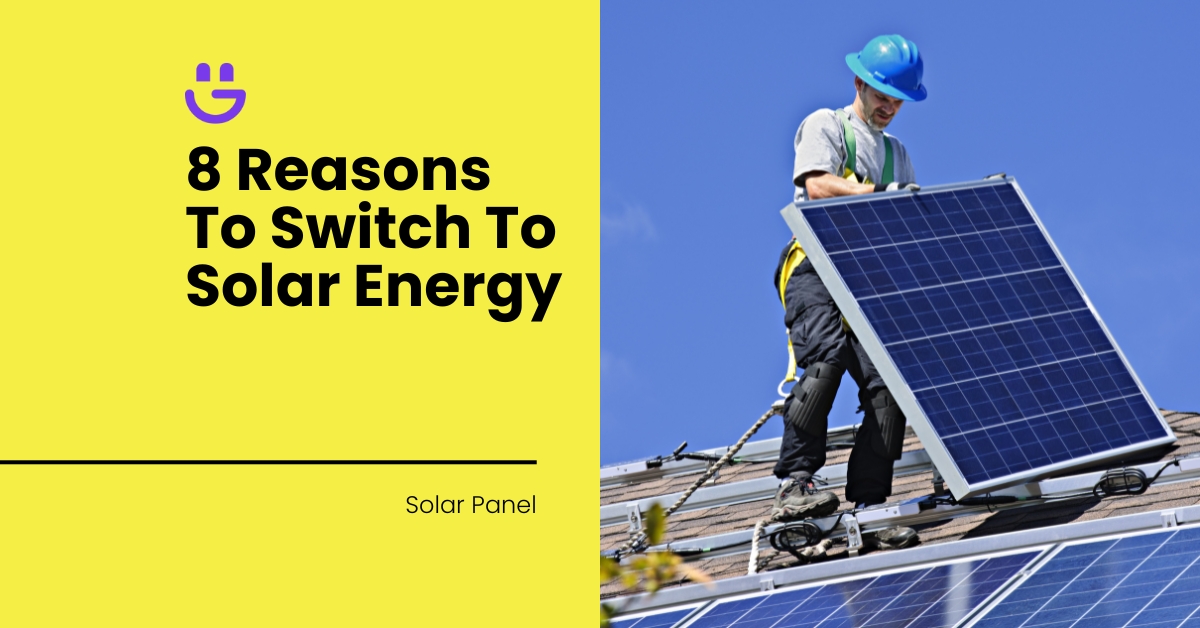Last Updated on November 14, 2025
While roof and ground-mounted solar systems both have their unique pros and cons, the choice often comes down to your budget and the conditions of your property.
In this article, we will help you decide whether a roof or ground-mounted solar system is best for your home or business.
Key Takeaways:
- Ground-mounted solar panels are best for properties with a sufficient amount of open space that is not shaded by tall buildings or trees.
- Roof-mounted solar panels are best for properties with sufficient roof space and proper orientation, ideally facing south and pitched 30 to 40 degrees. The roof should be less than 20 years old and in good condition.
Contents
Ground Vs Roof-Mounted Solar System: A Detailed Comparison
Let’s look at roof and ground-mount systems in more detail and compare how they do in terms of energy production, costs, long-term savings, installation difficulty, maintenance and aesthetics.
Energy production
- Rooftop solar panels are most efficient on south-facing roofs, pitched around 30 to 40 degrees.
- Since a ground-mounted system is not dependent on the angle or orientation of a roof, it can be set up at the optimal angle to catch sunlight. As a result, they generally produce more energy than rooftop systems. You can also equip them with solar trackers to follow the angle of the sun and increase energy efficiency.
Costs
- Roof mount systems are generally cheaper to install compared to ground-mounted ones. A roof in good condition can support a solar system without a lot of extra work.
- Ground-mounted systems require an additional support structure to carry and stabilise the panels. These structures make the system more expensive upfront.
Long-term cost savings
While they are more expensive to install, ground-mounted solar systems have higher efficiency levels than rooftop solar systems, as they can be positioned for optimal sun exposure.
Installation
- Rooftop solar installation processes may vary depending on the type, orientation and tilt of the roof but typically take less time to install compared to ground-mounted systems.
- With ground-mounted panels, the installation process includes building a sufficient mounting structure, as well as trenching for the cables running between the mount and the property.
Planning and grid permissions
- You generally don’t need planning permission to install solar panels on residential rooftops, unless your property is a listed building or in a conservation area.
- You must obtain planning permission for ground-mounted solar arrays over 9 sq m. If the solar system is larger than 16 Amps per phase, you will also need grid connection permission.
Maintenance
Both rooftop and ground mounts require little maintenance. However, the panels might lose efficiency over time due to dirt and debris, so they should be cleaned occasionally.
Ground-mounted solar panels are easier to inspect and clean compared to rooftop panels thanks to the easy ground access.
Aesthetics
- You will have to spare a decent amount of space on your property to install a ground-mount solar system. You may have to sacrifice a beautiful garden, a swimming pool, or a nice shed for the installation.
- Roof space, on the other hand, is usually empty space. A roof installation is also a lot more discrete compared to a ground mount.
Ground Vs Roof Mounted Solar System: Which is Best For You?
Here are a couple of important factors you should consider when choosing between roof and ground-mounted solar systems.
The available roof and ground space
One solar panel takes up around 2.4 metres on average, which means you roughly need:
- 14.5 – 16.8 sq m of space to install a 2.5 kW system.
- 15 – 24 sq m of space to install a 3.5 kW system.
- 24 – 36 sq m of space to install a 5-6 kW system.
However, these guidelines will depend on the individual panel wattage.
Roof type, angle and orientation
You may have enough roof space for a solar installation, but it doesn’t always mean your roof is suitable for solar panels.
- Your roof should be less than 20 years old and free from damage to support a solar array.
- South-facing roofs are ideal while east or west-facing roofs are also suitable for sun exposure. A north-facing roof may require additional optimisation, including adjusting the slope angle, increasing the number of panels and using solar panels with built-in bypass diodes.
- It can be challenging and costly to install solar arrays on roofs made of slate, wood shake and clay tiles. These materials are brittle and can’t support mounting hooks for the solar arrays. Additionally, tiles in areas where the hooks are attached may need to be replaced.
Shading
While rooftops often receive direct sunlight, shading can affect solar panels on the ground due to neighbouring buildings and trees. If you have tall buildings surrounding your property, the efficiency of your ground-mounted PV system will dramatically decrease.
Your budget
Ground-mounted arrays cost 10% to 30% more to install compared to roof-mounted solar systems. However, since they tend to produce more electricity, they are more cost-efficient in the long term.
Get Your Free Solar Installation Quote Today!
Still deciding between ground-mounted and roof-mounted solar panels? Let the experts at Eco Happy guide you! With years of experience and a commitment to tailored solutions, we’ll help you choose the perfect solar system to match your energy needs and property layout.
Don’t wait—request your free, no-obligation quote today and take the first step toward a greener, more cost-efficient future. We’ll handle everything from expert advice to seamless installation.
FAQs
What are the disadvantages of ground-mounted solar panels?
You must allocate valuable property space to ground-mounted solar systems. They are also more expensive due to the costs associated with the mounting structure and cable trenching.
Are solar trackers for ground-mounted systems worth it?
A single-axis solar tracker system can increase the energy efficiency of your solar system between 25% to 35%, making it well worth the investment.
How much does it cost to install solar trackers?
Solar trackers can cost anywhere from £500 to £1,000 per panel, plus installation fees. Overall, adding a solar tracker system may increase the upfront costs by around 50%.
Final Thoughts
While ground-mounted solar systems are more efficient and easier to maintain, roof-mounted systems are cheaper to install and tend to receive more direct sunlight in cities where tall buildings dominate the neighbourhoods.
Both systems have unique advantages so you must decide based on the conditions of your property. If you’re having a hard time deciding, you can always consult our team of experts at Eco Happy.





Tom Allen
Solar Expert